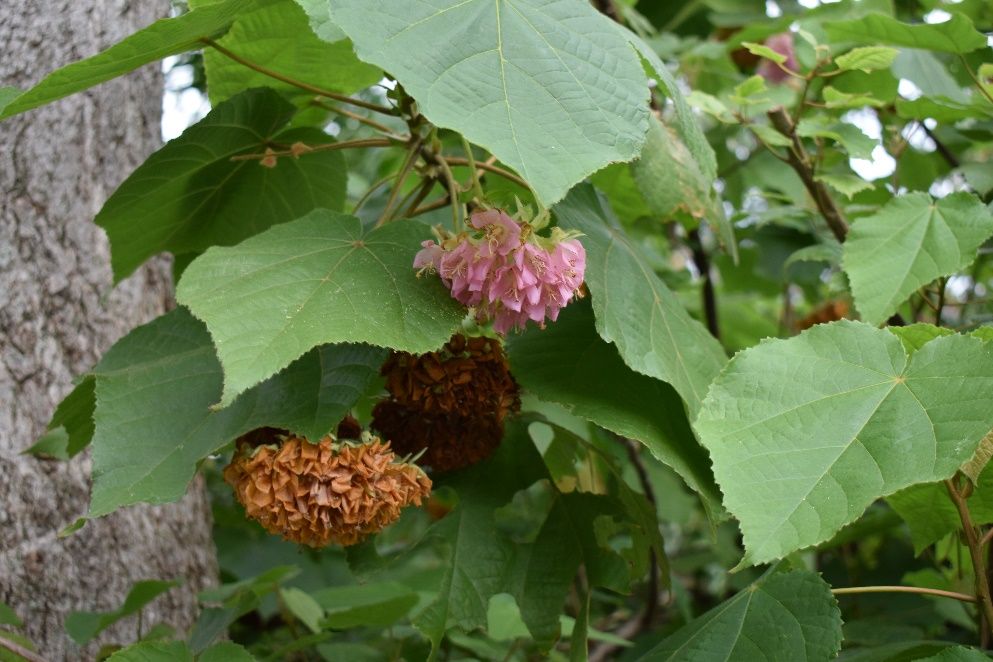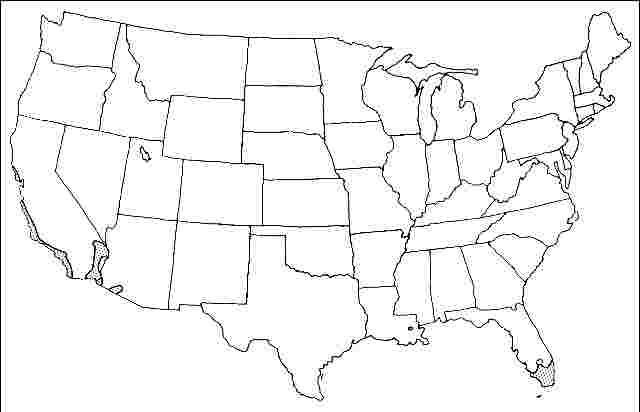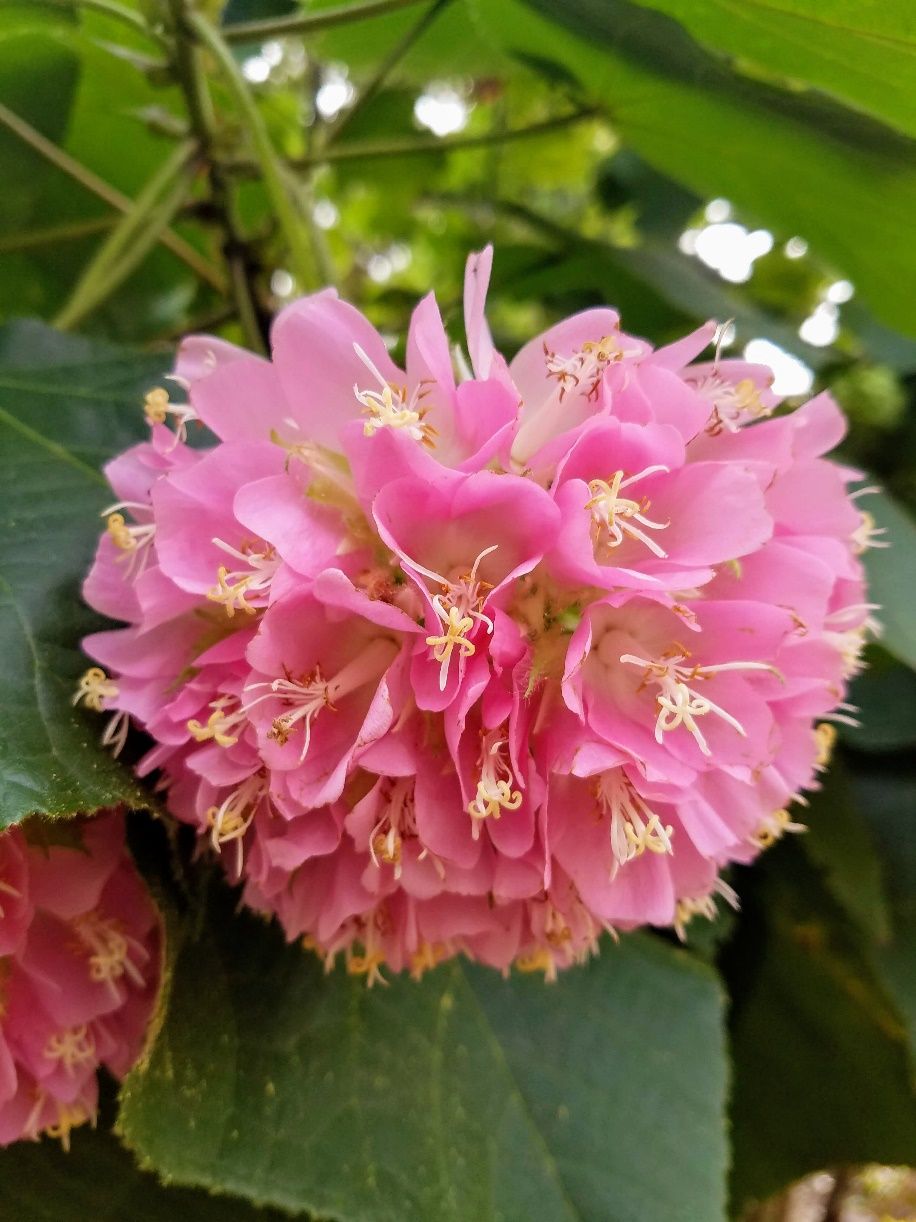Introduction
Nothing could be more attention getting than pinkball when in full bloom. Huge, pendent clusters of tightly packed, 5- to 6-inch-diameter, pink flowers give much the impression of upside-down corsages intermixed with large, coarsely textured, light green leaves. Pinkball maintains a rounded form and can grow to 20 feet in height with an equal spread and makes a spectacular specimen planting or patio tree. It is usually grown as a shrub.

Credit: Stephen Brown, UF/IFAS
General Information
Scientific name: Dombeya wallichii
Pronunciation: dom-BEE-yuh wall-ICK-ee-eye
Common name(s): Pinkball
Family: Malvaceae
USDA hardiness zones: 9B through 11 (Figure 2)
Origin: not native to North America
Invasive potential: not assessed/incomplete assessment
Uses: shade; specimen; deck or patio

Credit:
Description
Height: 20 to 30 feet
Spread: 20 to 25 feet
Crown uniformity: symmetrical
Crown shape: round
Crown density: dense
Growth rate: moderate
Texture: coarse
Foliage
Leaf arrangement: alternate
Leaf type: simple
Leaf margin: serrate, crenate
Leaf shape: cordate
Leaf venation: pinnate, palmate
Leaf type and persistence: broadleaf evergreen, evergreen
Leaf blade length: 2 to 4 inches, 4 to 8 inches
Leaf color: green
Fall color: no color change
Fall characteristic: not showy
Flower
Flower color: pink
Flower characteristics: showy

Credit: Stephen Brown, UF/IFAS
Fruit
Fruit shape: unknown
Fruit length: unknown
Fruit covering: unknown
Fruit color: unknown
Fruit characteristics: does not attract wildlife; not showy; fruit/leaves not a litter problem
Trunk and Branches
Trunk/bark/branches: branches don't droop; not showy; typically one trunk; thorns
Pruning requirement: needed for strong structure
Breakage: susceptible to breakage
Current year twig color: green
Current year twig thickness: medium
Wood specific gravity: unknown
Culture
Light requirement: full sun, partial sun, or partial shade
Soil tolerances: clay; sand; loam; slightly alkaline; acidic; occasionally wet; well-drained
Drought tolerance: moderate
Aerosol salt tolerance: none
Other
Roots: not a problem
Winter interest: no
Outstanding tree: no
Ozone sensitivity: unknown
Verticillium wilt susceptibility: unknown
Pest resistance: resistant to pests/diseases
Use and Management
Growing rapidly in full sun to partial shade on a wide variety of soils, pinkball needs protection from frost and is not salt-tolerant. Flower heads fall from the tree, remaining pink for a number of days. The dried flower heads will need to be cleaned up for a neat appearance beneath the tree but otherwise it is a very low-maintenance tree. Plants can be watered until established and then forgotten except in the driest locations.
There are several hybrids available.
Propagation is by softwood cuttings which root quickly and easily.
Pests
Aphids, soft scale, nematodes, and sooty mold are minor problems for pinkball.
Diseases
No diseases are of major concern.